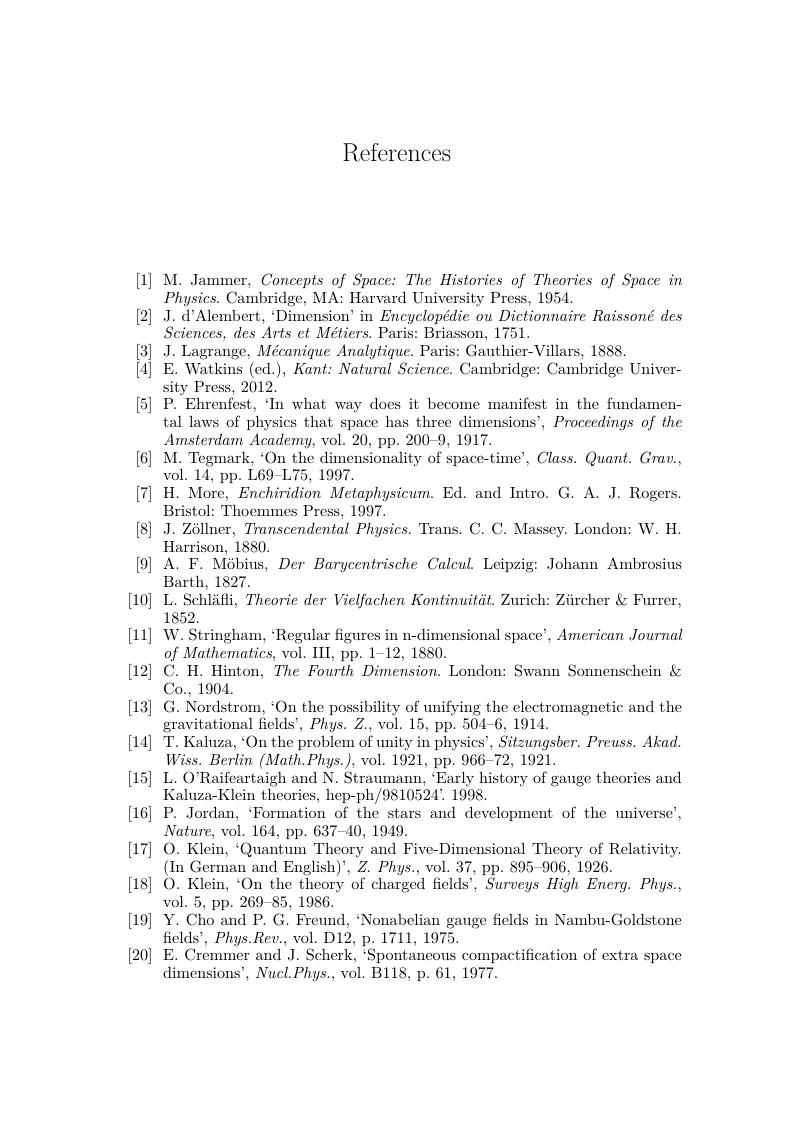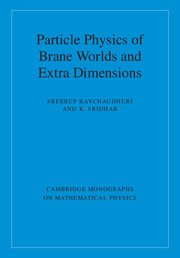Book contents
- Frontmatter
- Dedication
- Contents
- Preface
- 1 Dimensional dreams
- 2 The Standard Model and beyond
- 3 The birth of compact dimensions
- 4 String theory: a review
- 5 Effective theories
- 6 Large extra dimensions
- 7 Visible towers of invisible gravitons
- 8 Making black holes
- 9 Universal extra dimensions
- 10 Warped compactifications
- 11 Graviton resonances
- 12 Stability of warped worlds
- 13 Exploring the bulk
- 14 Epilogue
- Appendix A General Relativity in a nutshell
- Appendix B Testing the inverse-square law
- References
- Index
- References
References
Published online by Cambridge University Press: 05 July 2016
- Frontmatter
- Dedication
- Contents
- Preface
- 1 Dimensional dreams
- 2 The Standard Model and beyond
- 3 The birth of compact dimensions
- 4 String theory: a review
- 5 Effective theories
- 6 Large extra dimensions
- 7 Visible towers of invisible gravitons
- 8 Making black holes
- 9 Universal extra dimensions
- 10 Warped compactifications
- 11 Graviton resonances
- 12 Stability of warped worlds
- 13 Exploring the bulk
- 14 Epilogue
- Appendix A General Relativity in a nutshell
- Appendix B Testing the inverse-square law
- References
- Index
- References
Summary

- Type
- Chapter
- Information
- Particle Physics of Brane Worlds and Extra Dimensions , pp. 312 - 324Publisher: Cambridge University PressPrint publication year: 2016



